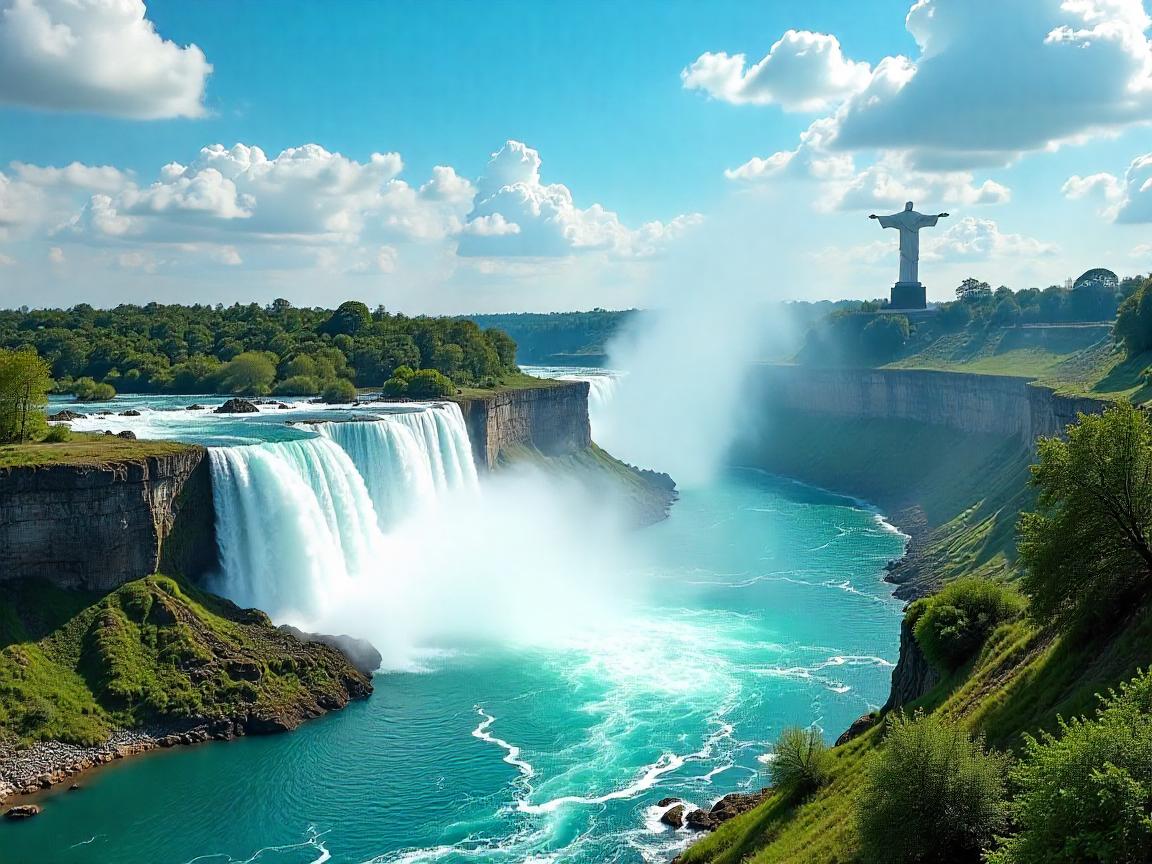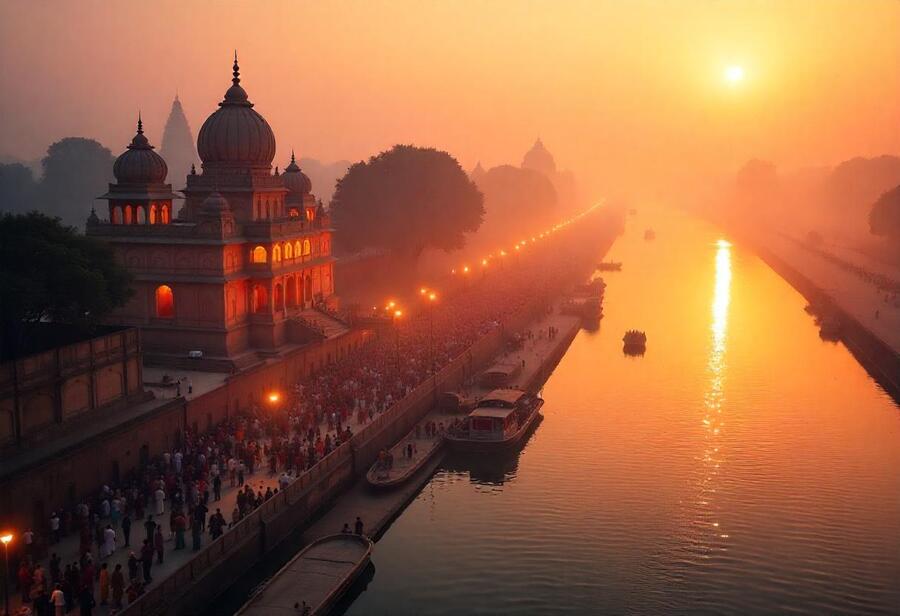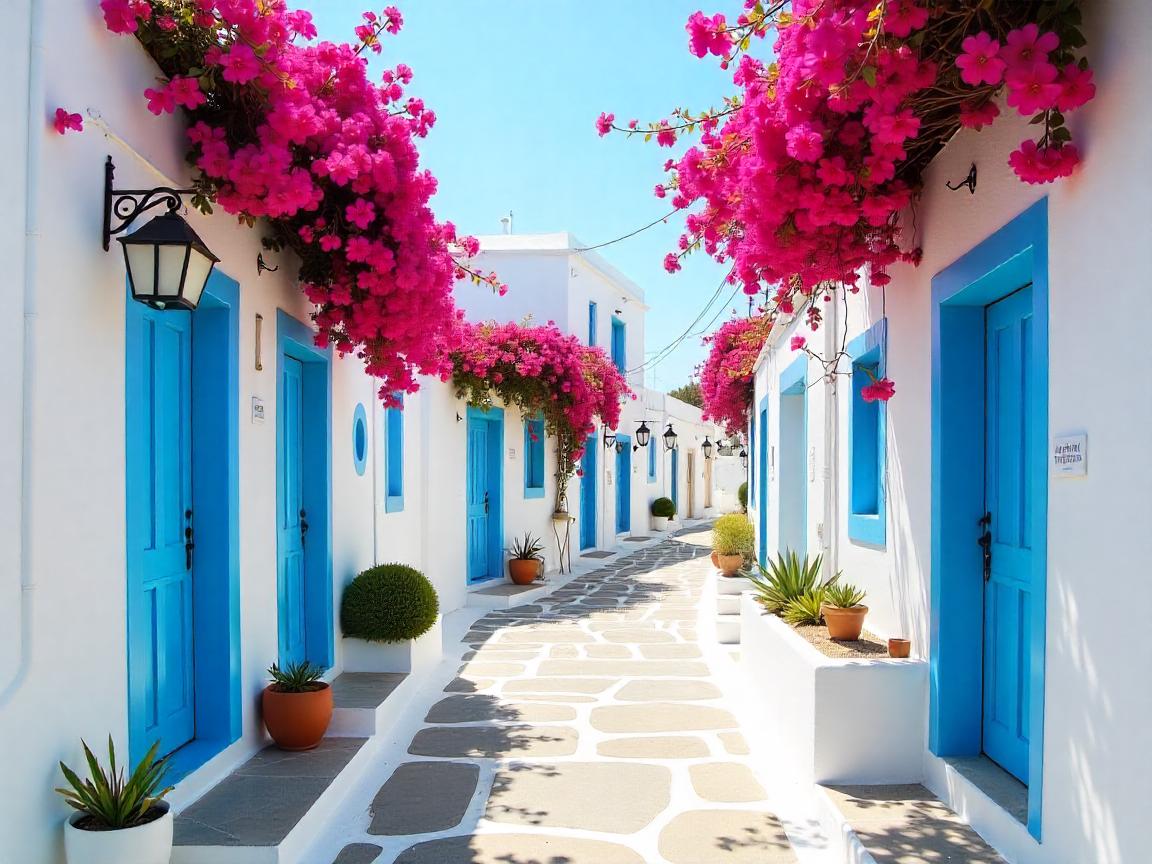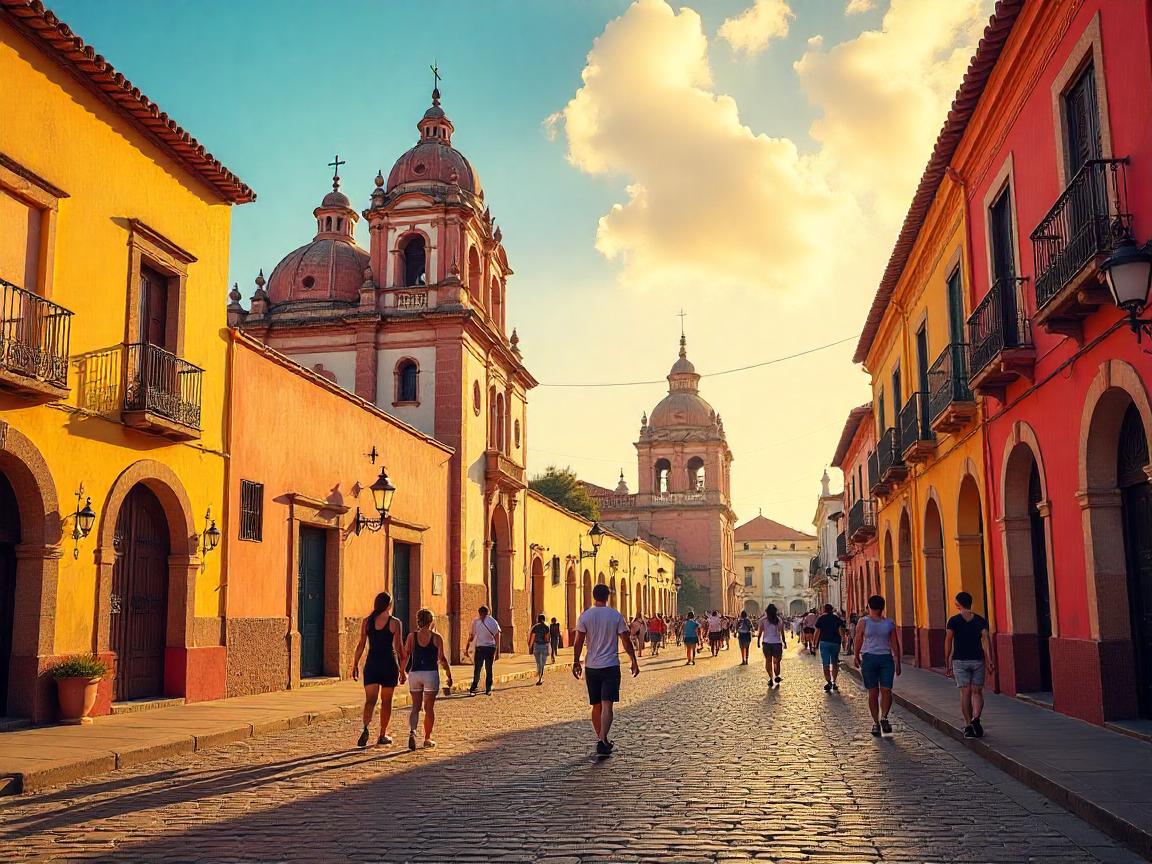≡-Why Canada, Mexico, Costa Rica, Bermuda, Nicaragua, Argentina and Brazil are Topping US Tourists Preference Lists to Travel for Labor Day Weekend, Just After July Fourth Holiday, New Update for You – Viral of Today
<> Viral of Today <>
Home » America Travel News » Why Canada, Mexico, Costa Rica, Bermuda, Nicaragua, Argentina and Brazil are Topping US Tourists Preference Lists to Travel for Labor Day Weekend, Just After July Fourth Holiday, New Update for You Friday, July 11, 2025Why are Canada, Mexico, Costa Rica, Bermuda, Nicaragua, Argentina, and Brazil finding their way to the number one spot of U.S. visitors’ must-see places for Labor Day Weekend travel, after the July Fourth holiday break? The response isn’t black-and-white—and that, in itself, makes the story all the richer. Travelers are hungry for the new, and these destinations are rising to the challenge in ways you might not have anticipated. Canada, Mexico, Costa Rica, Bermuda, Nicaragua, Argentina, and Brazil are, meanwhile, pulling all the stops to tempt American visitors with new experiences, off-the-beaten-track gems, and appealing deals.But what, specifically, is behind the new surge of interest? Breathtaking natural beauty, holiday culture, or astute marketing efforts shifting the tide? And could it alter the way Americans travel after the peak holiday season of the Fourth of July? Watch for the new update for you as it reveals secrets, trends, and cities that may very well alter your Labor Day Weekend plans. Coming fresh off a resounding Memorial Day and Independence Day travel weekend, the Labor Day travel weekend comes fast—and American visitors are already looking beyond the border. With international travel resurgent for 2025 and North and Central America offering convenient escapes, Labor Day promises a respite, as well as the capacity to discover new cultures, new cuisine, and new adventure.Let’s explore where—and why—you might go.Tourism Industry Soars Heading into Labor DayUntil July 2025, the travel and tourism industry all over North and Central America remains fully recovering. According to the UN World Tourism Organization (UNWTO) data, the Caribbean and Latin America were visited by 14% more visitors than the same year 2024, which demonstrates strong optimism by visitors.Canada has had a 12% jump in U.S. arrivals, which are headed by American visitors to Vancouver and Montréal. Lodgings have near-capacity bookings for the upcoming Labor Day weekend, with average daily rates for major Canadian cities now above $220, according to the Canadian Tourism Commission.Mexico’s travel sector stays robust. More than $2 billion in U.S. tourist spending over the Labor Day weekend is the forecast by the Mexican government. Cancún and Mexico City hotel occupancy already reached nearly 80% this summer. Americans seek a trouble-free holiday, which continues to make the country’s strong all-inclusive sector appealing.Cruising, too, has rebounded, as lines like Royal Caribbean and Carnival are offering 3-5 day cruises just for long weekends. Ships setting out of Miami and Galveston are filling up busy schedules to Belize, Cozumel, and even off-the-grid Honduras anchorages. Cruise Lines International Association (CLIA) foretells passenger expenditure at Central American ports surging to a record 2025 level of $3.2 billion.Meanwhile, other places like Costa Rica, Nicaragua, and Bermuda are gaining appeal as adventurers seek unusual, responsible experiences. Costa Rica’s tourist bureau predicts U.S. visitors will spend roughly $180 a day for short stays, which signals increasing interest ineco-lodges, local tours, and nature immersion travel.Quick Overviews: Nearby Destinations with Big AppealProximity is the secret to the American passport-holder looking abroad for travel during the Labor Day weekend. International options are two to five flying hours away, which makes them ideally suited to a three-day break.Canada offers city breaks like Vancouver’s new Waterfront and Montréal’s cobblestoned streets, along with cooler temperatures equivalent to autumn.Mexico remains the perennial favorite, offering beaches, history, and vibrant cities like Mexico City.Costa Rica and Nicaragua appeal to the adventurous tourist seeking rainforests and treks to volcanoes.Bermuda, which is a two-hour flight from the East Coast, offers pink-sand beaches and a British-Caribbean fusion atmosphere.These countries not only host U.S. guests, but they actually tailor services for American preferences, from English-language tours to accepting U.S. dollars in many businesses.Top Attractions and Hidden GemsIt continues to top people’s lists:There are mountain views and cycling trails at Vancouver’s Stanley Park.Montréal’s Basilica of Notre-Dame astonishes visitors with the majesty of itsCancún’s soft-sand beaches continue toBut hidden gems are bountiful. In Costa Rica, adventurers hike to Río Celeste, a blue river hidden away in Tenorio Volcano National Park. In Nicaragua, old towns like Granada are becoming newhotspots, while Bermuda’s Crystal Caves offer underground adventures often missed by beachgoers.Activities: Culture, Adventure, Food, and NightlifeTravelers have the option to pick their pace. Thrill-seekers zip through Costa Rican jungles or volcano-board through Nicaragua. Culture lovers stroll through arts districts of Mexico City, from galleries to bustling plazas.Food travel is a booming sector. Montréal’s cuisine mixes French classics with local favorites like sandwiches containing smoked meat. Mexico City offers street tacos, tamales, and pulque bars. Costa Rican fresh ceviche and gallo pinto are a must-try. Bermuda offers seafood-centric cuisine, topped off by fish chowder with black rum.Nightlife can vary anywhere from the salsa clubs of Mexico to the Bermudian beach bars and Vancouver craft brewpubs.Where to Stay: Accommodation TrendsThe tourist has several accommodation options:All-inclusive Cancún resorts are still favorite choices for easygoing.There are boutique hotels flourishing in Montréal and San José, which provide local character and individual design.Sustainable stays and ec-lodges are prospering in Costa Rica and Nicaragua.Short-term rentals keep strong, particularly in the city centers.We recommend advance booking for Labor Day, as several hotels near tourist attractions have limited availability.Tastes of the Region: Must-Try DishesLocal specialties are a major reason to travel:Montréal: Poutine, maple sweets, and freshly baked bagelsVancouver: Sushi and Seafood of theMexico City: Tacos al pastor, mole, and churros.Costa Rica: Gallo pinto and tropical fruits.Nicaragua: Nacatamales and vigorón.Bermuda: Fish chowder and rum cocktailsDining out remains affordable in Central America, whereas Bermuda and Canada are slightly expensive.ricier.Getting Around: Transport TipsCities like Montréal and Vancouver have excellent public transportation. For the case of Mexico City, the metro system is effective and cheap, though crowded during rush hour.Nicaragua and Costa Rica utilize buses, shuttles, and individual drivers. Renting a car is convenient but requires caution when you are navigating the mountain roads.There are no car rentals allowed for visitors in Bermuda. Travelers get around through the use of scooters, electric minibuses, and ferries.Costs and BudgetingCosts vary widely:Canada and Bermuda: Higher costs, with hotel rates from $200–$400 per night.Mexico and Central America: Budget-friendly. Daily expenses can range from $75–$150, excluding flights.Cruises: Labor Day packages start around $350–$500 for short Caribbean itineraries.Money tips: Carry some cash in Central America for small vendors. Credit cards are widely accepted in urban areas but check for foreign transaction fees.Visas and Travel RestrictionsVisa rules remain traveler-friendly:Canada and Bermuda: No visa needed for U.S. stays under six months.Mexico: No visa under 180 days, but a tourist card is required.Costa Rica, Nicaragua, El Salvador: U.S. citizens enter visa-free for up to 90 days but may need proof of onward travel.Travelers should monitor health advisories and entry requirements, especially in Central America.Practical Tips: Safety, Language, InternetSafety: Canada and Bermuda are very safe. Central America requires more vigilance—avoid isolated areas at night and stay aware of petty theft risks.Language: English is widespread in Canada and Bermuda. Spanish dominates in Mexico and Central America.Internet: Good in cities; patchy in remote regions.Customs: Respect local dress codes and avoid discussing sensitive political topics in Central America.Labor Day ItineraryDay 1: Arrive early, settle in, stroll the city or beach.Day 2: Take a cultural tour or adventure activity.Day 3: Shop local markets, enjoy leisurely dining, and depart in the evening.Labor Day 2025 offers American travelers the perfect chance to look beyond the border without straying too far from home. Whether it’s tropical beaches, cosmopolitan cities, or eco-friendly escapes, destinations close to the U.S. promise memorable long weekends—and a taste of the world just a few hours away.Independence Day: Record Numbers Set the PaceIndependence Day 2025 didn’t just mark fireworks and barbecues; it shattered travel records. More than 72 million Americans hit the roads, skies, and rails during the holiday stretch from late June into early July. Highways saw streams of travelers, airports handled their busiest days since pre-pandemic times, and popular destinations from national parks to beach towns were pushed to capacity.This holiday wasn’t just a blip. It laid the groundwork for an energetic July, with many travelers extending trips into the weeks that followed or planning new journeys inspired by the long weekend.Road Trips Lead the ChargeDriving remained king in July. Lower gas prices than in recent summers encouraged millions to choose the open road. Families packed SUVs for national parks, scenic coastal highways, and hidden gems in rural America.National parks reported some of their busiest mid-July weeks on record, with parks like Yellowstone, Yosemite, and Zion frequently nearing capacity. Rangers in several parks had to manage crowding with timed entries or rolling closures of certain roads and viewpoints to protect fragile ecosystems and ensure safety.Meanwhile, smaller towns and off-the-beaten-path destinations saw a steady influx of travelers looking for quieter alternatives to big-city congestion.Air Travel Soars — But Shows CracksAirports remained full through July, fueled by pent-up demand and the flexibility offered by hybrid work schedules. Many Americans seized opportunities for midweek departures and returns, stretching vacations beyond traditional weekends.Yet cracks began to appear. While planes were crowded, airlines noted softening demand in economy-class bookings, even as premium cabins held strong. Rising ticket prices — with some domestic flights topping $800 round trip — led some travelers to hit pause on last-minute air travel plans.Still, overall passenger counts stayed historically high, with airlines adjusting schedules to meet shifting demand while trying to keep costs in check.Cruise Comeback Gains SpeedThe cruise industry, battered during the pandemic, saw its fortunes rebound in July. Ships departing U.S. ports were often near full capacity, particularly on popular short itineraries to the Caribbean, Mexico, and Alaska.Travelers looking for all-inclusive vacations found cruises attractive, especially compared to soaring hotel and airfare costs in some domestic destinations. For many, cruises offered a hassle-free way to travel without worrying about nightly rates or restaurant reservations.This resurgence hinted at a new balance in vacation choices, with cruises reclaiming their spot in the American travel portfolio after years of uncertainty.Hotels Thrive — but Rates Keep ClimbingThe hotel industry rode the July wave. Occupancy levels hovered around 80 percent nationally, with major cities and coastal destinations running close to full. Nightly rates reached new heights, especially in places like New York City, Miami, and San Francisco, where rooms easily topped $400 a night for midrange accommodations.Smaller cities and regional markets also saw strong demand, as travelers looked for more affordable options and shorter drives. Short-term rentals remained popular, especially among families seeking kitchen space and privacy.Still, rising costs have left some travelers reconsidering their plans, with more opting for shorter stays or destinations where their dollar stretches further.Economic Caution Underlies the BoomWhile July travel has been robust, Americans are traveling with caution. Many remain mindful of economic uncertainty and whispers of a potential recession. Surveys this month found nearly half of travelers watching their budgets more carefully than in previous summers.People are increasingly choosing “micro-cations” — short, focused trips of just a few days — instead of long, expensive vacations. Road trips, regional getaways, and nature escapes fit the bill perfectly for travelers balancing wanderlust with financial prudence.Travel providers are responding, offering deals for off-peak days and bundling services to encourage bookings while keeping costs predictable for consumers.National Parks: Beauty Meets OvercrowdingAmerica’s national parks are both a triumph and a challenge this summer. Stunning landscapes continue to draw record numbers of visitors, but the influx is straining resources.Long lines at park gates, jam-packed parking lots, and crowded trails have become familiar scenes. Some parks have implemented reservation systems, timed entries, or temporary closures to manage crowds and protect natural habitats.Travelers planning park visits in late summer are advised to book early, arrive at sunrise, and consider lesser-known parks to avoid disappointmentInternational Travel Lags, Domestic Travel RulesDespite the domestic boom, international travel into the U.S. remains sluggish. Fewer foreign visitors are arriving, particularly from Canada and Europe. Economic factors, political tensions, and currency fluctuations have all played roles in keeping inbound tourism below pre-pandemic levels.This decline has hit urban destinations hardest, as cities like New York and Los Angeles traditionally rely on foreign tourists for significant portions of hotel, dining, and attraction revenue.Conversely, more Americans are choosing to stay stateside or travel only short distances abroad. Proximity, cost, and convenience continue to shape their decisions.Weather Woes: Summer Storms Make WavesJuly travel hasn’t been entirely smooth sailing. Tropical storms and heat waves have disrupted plans along the East Coast and Gulf regions. One storm earlier this month forced flight cancellations and brought flash flooding warnings, reminding travelers that summer adventures come with weather risks.Still, overall travel chaos was less than feared, with many people adjusting itineraries or simply waiting out brief disruptions.Can Labor Day Keep the Momentum?With July winding down, the travel industry has its eyes firmly set on Labor Day weekend. Early signs suggest strong bookings, though some caution remains due to unpredictable airfare prices and economic jitters.Travel experts predict road trips will again dominate, with coastal destinations, national parks, and smaller regional cities seeing continued high demand. Meanwhile, cruises and short-haul flights to Canada, Mexico, and the Caribbean may offer appealing alternatives for those seeking an international flavor without long flights or complex logistics.Traveler Tips for Late SummerAs the season rolls on, travelers planning August and Labor Day getaways should keep a few strategies in mind:Book early: Hotel rates and flights for holiday weekends are rising fast.Be flexible: Consider midweek travel to save money and avoid crowds.Research alternatives: Smaller cities and lesser-known parks offer value and fewer people.Watch the weather: Summer storms can change plans quickly.Budget wisely: Keep an eye on fees and hidden costs, especially for flights and rentals.July has proven that Americans remain eager to explore — but they’re doing so with a watchful eye on their wallets and the world around them. As summer heads toward its final stretch, the travel industry faces the challenge of sustaining the momentum while navigating the complex mix of demand, economics, and shifting traveler expectations.After years of growth and recovery in the travel industry, Canada’s summer tourism season in 2025 has taken an unexpected turn. While the country’s cities, parks, and cultural hubs remain as stunning as ever, new numbers show fewer Americans are crossing the border. As of July, the latest figures suggest a surprising dip in U.S. arrivals, raising questions about what’s behind the slowdown—and what it might mean for Canada’s tourism-driven communities.Here’s a closer look at the state of travel between the United States and Canada this summer, why the numbers are shifting, and what travelers and the industry should keep an eye on in the months ahead.A Strong Start Gives Way to Subtle DeclineEarlier in 2025, optimism in Canada’s tourism sector was running high. In spring, American visitors were flocking north for ski trips, urban getaways, and spring festivals. But as the summer approached, patterns began to shift. By the end of June, U.S. arrivals had started to lose momentum.Statistics Canada reported that in June alone, roughly 665,700 Americans flew into Canada—a figure only slightly lower than the same time last year. Yet while air arrivals held relatively steady, the bigger story emerged on the roads.More than 1.4 million Americans entered Canada by car in June, but this number represented a significant drop—over 10 percent lower than June 2024. That means tens of thousands fewer vehicles rolled over Canada’s borders, even during the days leading up to the busy Canada Day holiday.As July unfolded, preliminary data suggested the same pattern continued: air travel modestly stable, road travel slipping further behind last year’s volumes.Peaks and Valleys: Holiday Surges Still StrongDespite the overall downward trend, Canada’s border crossings aren’t entirely quiet. Holiday weekends remain magnets for American tourists eager for a quick escape across the border. The Friday and Saturday leading up to Canada Day were particularly busy, with over 75,000 cars per day streaming into Canadian border crossings.These bursts of activity show that many Americans still see Canada as a convenient and exciting getaway. Cities like Vancouver, Toronto, and Montréal remained popular for short breaks, while border towns such as Niagara Falls and Windsor enjoyed the temporary boost of tourist dollars.However, tourism experts note that these holiday spikes have been shorter and more concentrated than in previous years, with fewer extended stays. Travelers seem more likely to visit for a weekend rather than stretch trips into longer holidays—a trend mirrored across much of the travel industry.Why Americans Are Staying Home—or Going ElsewhereSo what’s behind the slowing pace of U.S. travel to Canada in summer 2025? Industry observers say the answer isn’t simple, but several factors appear to be converging.First, economic concerns continue to cast a shadow over travel plans. While inflation has cooled from its earlier highs, many American travelers remain cautious with discretionary spending. Road trips, once seen as a cheaper alternative to flying, have been hit by higher fuel prices in some regions, making long drives across the border less appealing for families looking to keep budgets under control.Second, the strength of the U.S. dollar has shifted slightly, affecting the perceived value of trips north. Earlier in the year, favorable exchange rates made shopping and dining in Canada particularly attractive to American visitors. But currency fluctuations over the past several months have narrowed those benefits, causing some travelers to think twice before heading across the border.Third, evolving travel habits play a role. Since the pandemic, American travelers have shown a strong preference for domestic destinations, rediscovering national parks, coastal towns, and small cities within the United States. As a result, some travelers who might previously have looked north are choosing familiar destinations closer to home.Finally, there’s the question of travel logistics. While border crossing processes have become more efficient in many areas, some travelers still perceive hassle in crossing international lines, particularly for shorter trips. For spontaneous travelers, even the idea of paperwork, wait times, or unpredictable border traffic can be enough to keep them stateside.Tourism Industry Feeling the PinchCanada’s tourism industry has been quick to notice the shift. Cities, hotels, and attractions rely heavily on American visitors, who are historically the country’s largest international tourism market.Businesses in border towns are among the hardest hit. Restaurants, shops, and entertainment venues in communities like Niagara Falls, Windsor, and White Rock depend on steady flows of American customers. When fewer cars roll in from Buffalo, Detroit, or Seattle, local economies feel the absence almost immediately.Tourism boards across the country have begun ramping up marketing campaigns aimed at American travelers, emphasizing ease of travel, cultural experiences, and the financial value of a Canadian vacation. Provinces like British Columbia and Ontario have invested in targeted advertising, especially in U.S. border states such as New York, Michigan, and Washington.Canadians Also Traveling Less to the U.S.Interestingly, the slowdown isn’t entirely one-sided. Canadian travel into the United States has also cooled in recent months. Statistics show that Canadian visits to the U.S. fell sharply in June, with both air and car trips significantly lower than the same time last year.Industry analysts suggest that economic caution, fluctuating exchange rates, and higher travel costs on both sides of the border are making people think twice before committing to international trips. That mutual slowdown has created ripple effects in both countries, particularly in industries that depend on cross-border commerce and tourism.A Glimpse Ahead: What Could ChangeAs Canada looks toward the rest of summer and the upcoming Labor Day weekend, the tourism industry is cautiously optimistic. Holiday weekends still promise to bring waves of travelers north, and many believe pent-up demand remains strong, especially for destinations offering natural beauty and outdoor recreation.Some tourism experts suggest that if fuel prices stabilize and the U.S. dollar regains strength, more Americans may return for fall foliage trips or early winter holidays. Additionally, events like music festivals, sporting events, and cultural celebrations could lure travelers back across the border in the coming months.Travel industry leaders are hopeful that renewed marketing efforts and reminders of Canada’s diverse attractions—from world-class cities to serene wilderness—will turn the tide. Meanwhile, border communities continue to wait, watching traffic counts and hoping for the familiar sight of cars with U.S. plates pulling in for a visit.Practical Advice for TravelersFor Americans considering a trip to Canada this summer or fall, the message is clear: it’s still a great time to go. While fewer travelers might mean shorter wait times at popular attractions, it also means there’s more room to enjoy Canada’s natural beauty and vibrant cities.Travelers planning road trips should watch fuel prices, plan border crossings for off-peak hours, and check for any documentation requirements. For those flying, early booking remains wise, as popular destinations can still fill quickly, especially during holiday weekends.Even with the current slowdown, Canada remains one of the most accessible and diverse international destinations for American travelers. Whether you’re craving urban adventure, outdoor exploration, or simply a taste of a different culture without crossing an ocean, the Great White North is waiting—and perhaps this summer, with a bit more space for you to enjoy it.Now Canada is Calling for Labour DayCanada is more than maple syrup and Mounties. It’s a country of jaw-dropping landscapes, cosmopolitan cities, and warm, welcoming people. From rugged coastlines to glittering skyscrapers, from French cafés to towering rainforests, it’s a place that can feel like a dozen countries rolled into one.Whether you crave outdoor adventure, cultural immersion, or simply spectacular views, here’s your guide to the best places to visit in Canada — each with its own personality, flavour, and reasons to make you say, “Oh, Canada!”Vancouver, British Columbia: Mountains Meet the SeaOn Canada’s west coast sits Vancouver, a city hugged by ocean, beaches, and snow-capped peaks. It’s the rare place where you could kayak in the morning and ski in the afternoon — or simply stroll along the seawall for views that will steal your breath away.Why Go?Explore Stanley Park, a 1,000-acre green oasis with towering cedars and totem poles.Wander vibrant neighbourhoods like Gastown, filled with cobblestone streets and indie boutiques.Feast on fresh Pacific seafood and some of the best sushi outside Japan.Vancouver also makes a perfect jumping-off point for day trips to Whistler, Vancouver Island, or the temperate rainforests of the Pacific Rim.Banff National Park, Alberta: A Real-Life PostcardNestled in the Rocky Mountains, Banff is Canada’s ultimate mountain paradise. Think emerald lakes, glacier-draped peaks, and wildlife so close you’ll practically hear elk whispering secrets in the forest.Highlights Include:Lake Louise’s shimmering turquoise waters, perfect for paddling or simply gazing.Hiking trails like Tunnel Mountain or Johnston Canyon.The charming alpine town of Banff, with cosy restaurants and hot springs to warm your bones after a day outdoors.Come in winter for world-class skiing, or visit in summer for hiking, biking, and those picture-perfect mountain views.Québec City, Québec: Europe Without the Jet LagWant cobblestone streets, stone fortresses, and French pastries — but don’t fancy a transatlantic flight? Québec City offers a European vibe, complete with winding alleys and a language that dances off the tongue.Why It’s Special:Old Québec is a UNESCO World Heritage Site, surrounded by 400-year-old walls.Château Frontenac towers above the St. Lawrence River, arguably the world’s most photographed hotel.Winter brings the Québec Winter Carnival, with ice sculptures, parades, and people in colourful red sashes braving the chill.Even in summer, Québec City hums with music festivals, open-air cafés, and historic charm.Toronto, Ontario: Canada’s Cultural PowerhouseToronto isn’t just Canada’s biggest city — it’s one of North America’s most multicultural urban playgrounds. You can shop in Chinatown, dine in Little Italy, and browse markets bursting with Middle Eastern spices — all without leaving the city centre.Must-Do Experiences:Gaze across the city from the CN Tower’s glass-floored observation deck.Explore world-class museums like the Royal Ontario Museum and the Art Gallery of Ontario.Catch a baseball game at Rogers Centre or dive into the city’s indie music scene.Toronto also makes a great base for day trips to Niagara Falls or wine country in Niagara-on-the-Lake.Niagara Falls, Ontario: Nature’s Thunderous MarvelYes, it’s touristy. Yes, it’s popular. But Niagara Falls is a natural wonder for a reason. The sight — and sound — of millions of gallons of water plunging over the cliffs is unforgettable.Top Experiences:Ride the iconic boat tour for a close-up view (prepare to get drenched!).Stroll along the promenade for panoramic vistas.Visit nearby vineyards for wine tasting, especially the region’s signature ice wine.Beyond the falls themselves, the region offers charming towns, historic sites, and lush parks.Montréal, Québec: Where Old Meets NewMontréal fuses French sophistication with North American cool. It’s a city that loves festivals, food, and the fine art of enjoying life.Why Visit?Explore Old Montréal’s cobblestone streets and the stunning Notre-Dame Basilica.Sample a culinary scene that ranges from gourmet French fare to steaming plates of poutine.Join one of the city’s many summer festivals, from jazz to comedy to fireworks competitions.Montréal has a youthful energy and a vibrant cultural tapestry that make it utterly unique.Halifax, Nova Scotia: East Coast WarmthHalifax may be small compared to Toronto or Vancouver, but it packs a maritime punch. It’s the gateway to Canada’s east coast, where salty air, seafood chowder, and a love for storytelling rule the day.Highlights Include:Strolling the bustling Halifax waterfront with its colourful ships and seafood stalls.Touring the historic Citadel fortress overlooking the city.Day trips to the iconic lighthouse at Peggy’s Cove or the picturesque villages of Lunenburg.The people of Nova Scotia are famously friendly — you might leave with a few new friends and a taste for fiddle music.Whitehorse, Yukon: The Wild NorthFor those craving wilderness, Whitehorse delivers. As the capital of the Yukon Territory, it’s a launchpad for adventures into some of Canada’s most remote and stunning landscapes.Reasons to Go:Experience the midnight sun in summer or witness the Northern Lights in winter.Paddle the mighty Yukon River or hike wilderness trails that seem to stretch forever.Learn about gold rush history and indigenous culture.Whitehorse is for travellers who want something raw, wild, and profoundly beautiful.Victoria, British Columbia: Garden City by the SeaVictoria, perched on Vancouver Island, offers a softer, more genteel take on west coast life. The city blends British tradition with coastal beauty.Top Experiences:Afternoon tea at the grand Fairmont Empress Hotel.A stroll through Butchart Gardens, a riot of colour and fragrance.Whale watching tours to spot orcas off the coast.Victoria’s harbour is one of the prettiest in the world, surrounded by old-world architecture and blooming flower baskets.Tips for Exploring CanadaTiming: Summer is the peak season for most destinations. Fall offers gorgeous colours and fewer crowds, while winter brings skiing and magical snow-covered scenery.Distances: Canada is vast — flights between cities often save time over long drives.Weather: Even in summer, mountain areas can be chilly. Layers are your friend.Culture: Canadians are polite and friendly. “Sorry” and “thank you” go a long way!Canada: One Country, Endless JourneysCanada is a place where urban buzz and wilderness calm exist side by side. It’s a country where you can hike through glaciers one day and sip craft cocktails in a skyscraper lounge the next.Whether you’re drawn by the call of the Rockies, the historic charm of Québec, or the rugged edges of the Arctic Circle, Canada welcomes you with open arms, stunning scenery, and more experiences than you could pack into a single lifetime.So pack your bags, brush up on your “eh?” and get ready to explore one of the world’s most spectacular travel playgrounds. Canada is calling — will you answer?Tags: Banff National Park, halifax, labour day, Montréal, niagara falls, Ottawa, Québec City, Toronto, vancouver, Victoria, Whitehorse
This information will surprise you!
See also
- Read until the end to discover everything.
- Important information you need to know.
- Interesting facts and helpful tips.
Conclusion
Did you enjoy the news? Keep following us daily!













